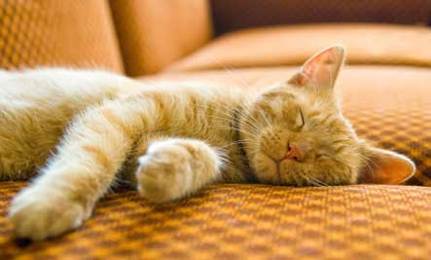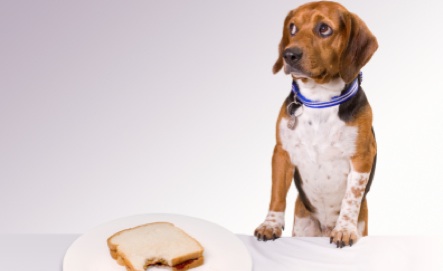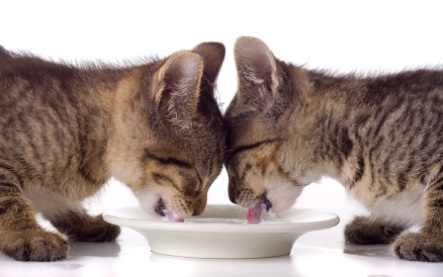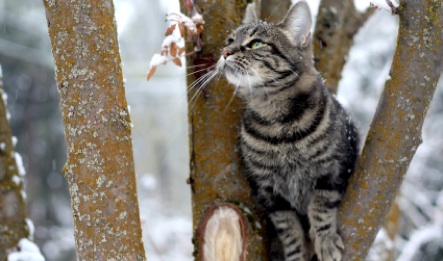Domesticated cats are seldom accused of overexertion. The life of a house cat basically consists of four activities: playing, ruining upholstered furniture, eating and sleeping — and that last activity takes up the most time by far.
Cats are among the top sleepers in the animal kingdom, and for good reason: They are, in the wild at least, predators, and their prey does not usually want to get caught. This means that cats have to do quite a bit of chasing, and that chasing (hopefully) culminates in a huge burst of energy for the final takedown. If they do not have the energy for a successful hunt, they do not get to eat. So they have evolved to sleep (or sometimes just rest) for most of the time they do not spend hunting, saving up the strength to catch dinner.
What they eat may contribute to their sleep time, as well. They live on protein, which packs a lot of energy into a relatively small package. They need not spend endless hours grazing or foraging the way large herbivores do.
So, just how much sleep does a wild cat get? Anywhere from 16 to 20 hours a day, typically. For very young and very old cats, it is near the upper end of the range, and newborns sleep almost 24/7.
While cats do spend at least two-thirds of their lives asleep, they are not “asleep” in quite the same way humans are. They do experience both non-REM and REM sleep, but for cats, “asleep” is not “off the clock.” Cats are always on the alert, even when they are dozing.
If a strange noise wakes them up, they are almost instantly aware and fully operational. It is an ability that cats (and wild animals in general) depend on to stay safe, and fed, in nature’s Darwinian existence.
House cats, of course, have left “survival of the fittest” behind. They need not chase down their dinner. They are, on the contrary, served their meals, sometimes gourmet ones, in a timely fashion. But the instincts have not changed; house cats have the same genetic programming as feral cats.
Domesticated felines, like their wild counterparts, sleep about 16 hours a day, on a pretty regular schedule, saving up their energy for the hunt. You never do know when the gourmet food is going to run out.
Did You Know?
Sloths typically beat out most cats in terms of sleep time, coming in at an impressively slothful 19 to 20 hours a day.
In the wild, female lions tend to sleep more than male lions. They need the extra rest because they do the hunting for the pride.
Cats are crepuscular, not nocturnal. They are most active at dawn and dusk.
Adapted from an article on Animal Planet









